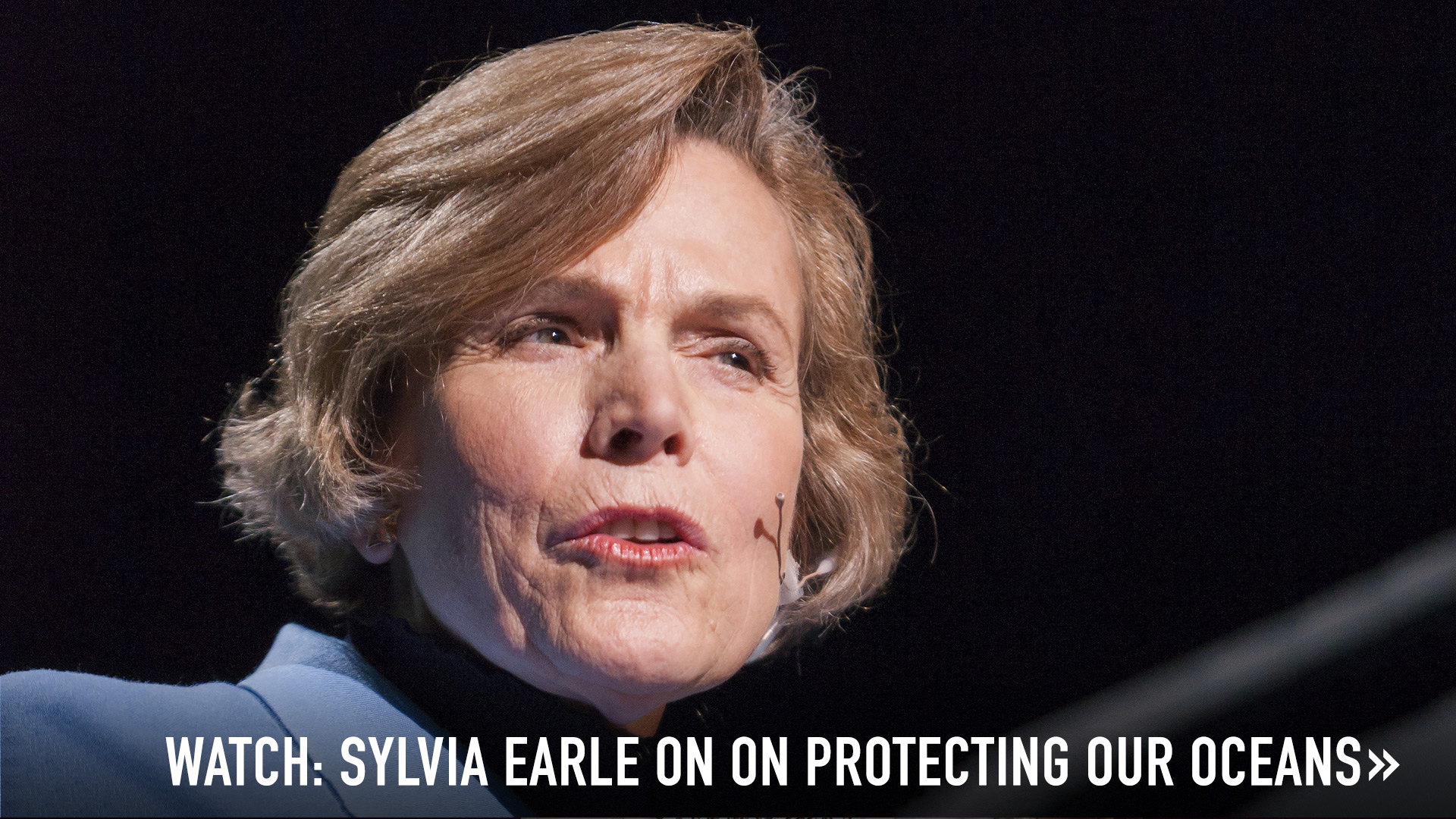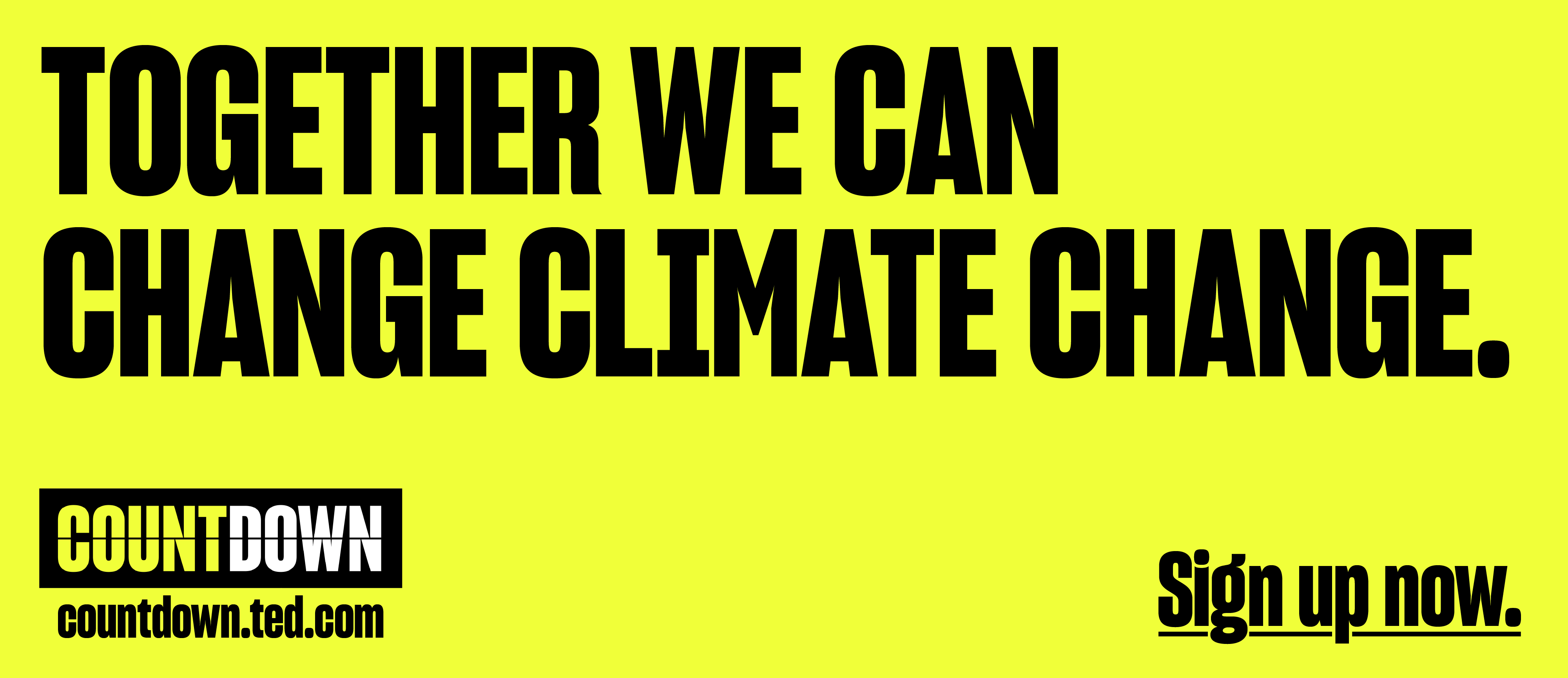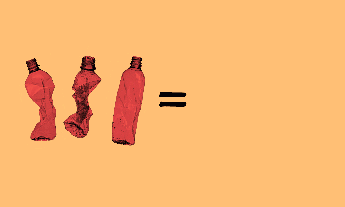
Not all plastic is evil, but our world could probably do with a whole lot less of it. Check out these great ideas — from a googly-eyed trash catcher to a styrofoam substitute made from mushrooms — and learn some small steps you can take right now.
Before you read this piece, just take a quick look: How many of the objects around you or on you contain plastic?
Chances are, it’s everywhere. Strangely enough, we owe its existence to a contest run by a billiards company. In 1863, US inventor John Wesley Hyatt was inspired by a $10,000 prize to create a replacement for the rare and expensive ivory — harvested from elephants — that made up billiard balls. After years of experimentation, he developed a malleable yet hard material from the cellulose in cotton. He called this early plastic “celluloid,” and in a pamphlet, he wrote of its world-changing potential: “It will no longer be necessary to ransack the earth in pursuit of substances which are constantly growing scarcer.”
Plastics did indeed change the world. But while they started out as an environmentally friendly alternative, they’ve led to a cascade of problems for us and for the earth.
Today’s plastics are fully synthetic, created by refining oil. Thanks to their complex chemical structure, they don’t decompose, and they’re challenging to recycle — a shocking new report revealed that only 9 percent of the plastic created since 1950 has been recycled. With more than 300 million tons of plastic produced worldwide a year, plastics are choking our landfills, collecting in massive floating gyres in our oceans and leaching chemicals into our food.
Many people around the world — scientists and engineers, entrepreneurs and conservationists — are thinking about how to solve the plastic problem from different angles. Below are a handful of thoughtful ideas to consume, discard and manufacture plastics more responsibly.
1. Help stop plastic from reaching the oceans
Plastics float. So when tossed haphazardly, plastic litter can be washed into sewers and waterways, where it’s carried out to sea. The UN’s dire prediction: by 2050 there will be more plastic in the ocean than fish. “It’s poisoning the planet’s circulatory system,” says marine biologist, ocean conservationist and 2009 TED Prize winner Sylvia Earle (TED Talk: My wish, protect our oceans).
Cleaning up the floating garbage patches in the world’s oceans is a Sisyphean task, so Earle and her team at the nonprofit ocean protection organization Mission Blue are focused on trying to stop plastics before they get there. That’s why they love “Mr. Trash Wheel” (its official name is The Waterwheel Powered Trash Interceptor), a friendly-looking, googly-eyed, solar- and water-powered device that glides through Baltimore Harbor snarfing up floating litter.
Created by engineer John Kellett, it contains rotating forks that push plastics and other floating refuse up a conveyor belt and into a dumpster. Since 2014, Mr. Trash Wheel has collected half a million Styrofoam containers, 300,000 plastic bags and 400,000 plastic bottles. In December 2016, another interceptor — called Professor Trash Wheel — was added to the Baltimore Harbor, and versions are in the works for Honolulu, Milwaukee, Atlanta, Rio de Janeiro and Panama City.
Mission Blue also highlights the Seabin Project, which makes and sells floating trash interceptors for ports, marinas and calm bodies of water. An internal pump in the container sucks in plastics without trapping marine life. In pilot tests in European ports, each Seabin was found to collect a half ton of garbage a year. But cleanup efforts don’t require fancy technology.
The Mission Blue team are also big fans of the River Warriors of Manila, the Philippines, a group of people who patrol tributaries of the Pasig River, which was terribly polluted. They clean up trash and encourage other residents to care for the waterway. Once volunteers, the River Warriors are now trained and paid workers, creating employment for the community, too.
2. Give up small plastic products
It’s not just River Warriors and googly-eyed monsters who can stop plastics from hitting the high seas — we can all do our part. Too many plastic water bottles are still being discarded — Americans alone throw away 2.5 million an hour — so use a reusable bottle. Avoid disposable plastic grocery bags, which can choke marine life, by bringing your own tote.
Mission Blue suggests some smaller changes, too. Take inspiration from Charleston, South Carolina, which launched the Strawless Summer Challenge. (Plastic straws can look like food to fish and turtles and get stuck in their digestive systems.) Meanwhile, the #Topless4Oceans campaign is all about skipping plastic lids on coffee cups and fountain sodas.
Or you can think even smaller. More than 800 trillion plastic microbeads from face washes, body scrubs, toothpastes, detergents and other household products are washed down drains every day in the US alone. The beads are so tiny that they pass through filters at water treatment plants and wash out to sea, where marine animals eat them (and yes, if you eat seafood, you’ll eventually be eating those same microbeads).
A 2015 US law banned plastic microbeads in “rinse-off cosmetics”, but many other products still contain them. Beat the Microbead, part of the International Campaign Against Microplastic Ingredients in Cosmetics, keeps a list of scrubs, cleansers and toothpastes that are free of plastic microbeads. More than 20 countries are covered.
Also close to home, studies show that plastic microfibers from clothes made of polyester and nylon are being released into the oceans in surprising amounts. In fact, a study in Nature discovered plastic microfibers in 25 percent of fish for sale, raising a serious health concern for humans.
Besides opting for natural fibers, you can wash synthetic clothing as infrequently as possible, and when you do wash your polyesters, put them in full loads with cold water to minimize the friction that releases fibers. You can also try using a Guppy Friend Washing Bag, which captures microfibers and keeps them from leaving your washing machine.
3. Support efforts to make it easier to recycle plastic
Recycling plastics can be complicated for a bunch of reasons. First, different plastics are made out of different basic resins — if you’ve noticed, they’re often marked with numbers from 1 through 7 inside a triangle, to show what they’re made of. Cities and towns pay recycling companies to process each variety separately, and since plastic recycling is expensive anyway, many communities recycle only a few classes (usually just 1 and 2).
On top of this, plastics need to be well-rinsed to be recycled; yes, that yogurt container needs to be squeaky clean or it goes to a landfill. On top of that, according to the EPA, 27 percent of municipalities in the US don’t offer curbside recycling, which makes it even less likely we’ll make the effort to wash and separate plastics and haul them to a recycling station. Thanks to all these factors, only 7 percent of plastic in America is recycled. The rest is buried in landfills or shipped to other countries to be incinerated — a process that takes a harmful physical toll on the people doing the work.
Adding difficulty to recycling: those numbers in triangles on products disguise the fact that there are actually thousands of types of plastic and a single product may contain many different kinds. While metals can be easily separated for recycling by their magnetic properties, plastics are not easily differentiated.
Engineer Mike Biddle has spent 20 years developing a solution for this (TED Talk: We can recycle plastic). His California-based company, MBA Polymers, uses a 30-step process that starts with mountains of mixed plastics, grinds them down to tiny fragments and sorts them by type, grade and color to create single-origin plastic pellets that can be used to make new products.
Back when Biddle gave his TED Talk, his product was still in development; now companies like Nespresso and Electrolux are using it instead of so-called “virgin plastic” for some of their goods. In another promising sorting idea, last year the UK plastic recycling company Nextek created “PRISM” plastics, which glow in fluorescent pinks, blues, reds and yellows depending on their type when viewed under infrared light, to ease sorting. In 2016, Nextek won a grant from the British government to develop these plastics for widespread use.
Polymer chemist Jeannette Garcia sees tremendous potential in creating plastics designed for easy recycling (TED@IBM talk: A super-strong plastic that reverts to dust). In her lab at IBM, she took discarded water bottles and broke them down into a powder. Using a reactant, she transformed the powder into a thermoset, an industrial plastic that is stronger than bone and can be used in automobiles, airplanes and electronics.
While thermosets can’t typically be recycled, Garcia’s version can be dissolved by sulphuric acid. The acid can then be neutralized and filtered, leaving behind the original powder. “Imagine the benefits of complete reversion of materials,” says Garcia. “You could recycle it an infinite number of times.” IBM is looking to license this technology or partner with a company to produce it.
4. Go back to nature for better packaging
Another group of innovators is returning to plastics that, like Hyatt’s 1869 celluloid, are derived from plants. Right now, when you buy any large appliance or piece of furniture, it often arrives with a mountain of Styrofoam packing material. The EPA estimates that Styrofoam takes up one-quarter of landfill space in America.
Industrial designer Eben Bayer has a potential solution: protective packaging made from mushrooms, an idea he unveiled in 2010 on the TED stage (TED Talk: Are mushrooms the new plastic?). Mushrooms, says Bayer, are “nature’s recycling system,” transforming dropped leaves into topsoil. His MycoFoam takes agricultural waste — usually the husks of grain — and sets it in molds with mycelium, the vegetative part of mushrooms and other fungi.
The mycelium works like a glue and molds the waste into a biodegradable polymer that can absorb impact and insulate. Seven years after Eben talked about MycoFoam on the TED stage, it can now be found in packaging from Dell and Merck, and the product line has expanded to include wall insulation and marine buoys.
There’s lots of other food-inspired packaging in the works. A team of Japanese designers has made a packaging material from a gelatinous substance found in marine algae — it could be deployed to cushion goods, even fragile ones like glass.
Scientists at the USDA have created a biodegradable film made from the milk protein casein that could be used for food packaging. It’s said to be 500 times better than plastic at keeping out oxygen and thus preventing spoilage. Bonus: the film can also be eaten rather than discarded. Imagine, the wrapper might someday be another part of your string cheese snack.














